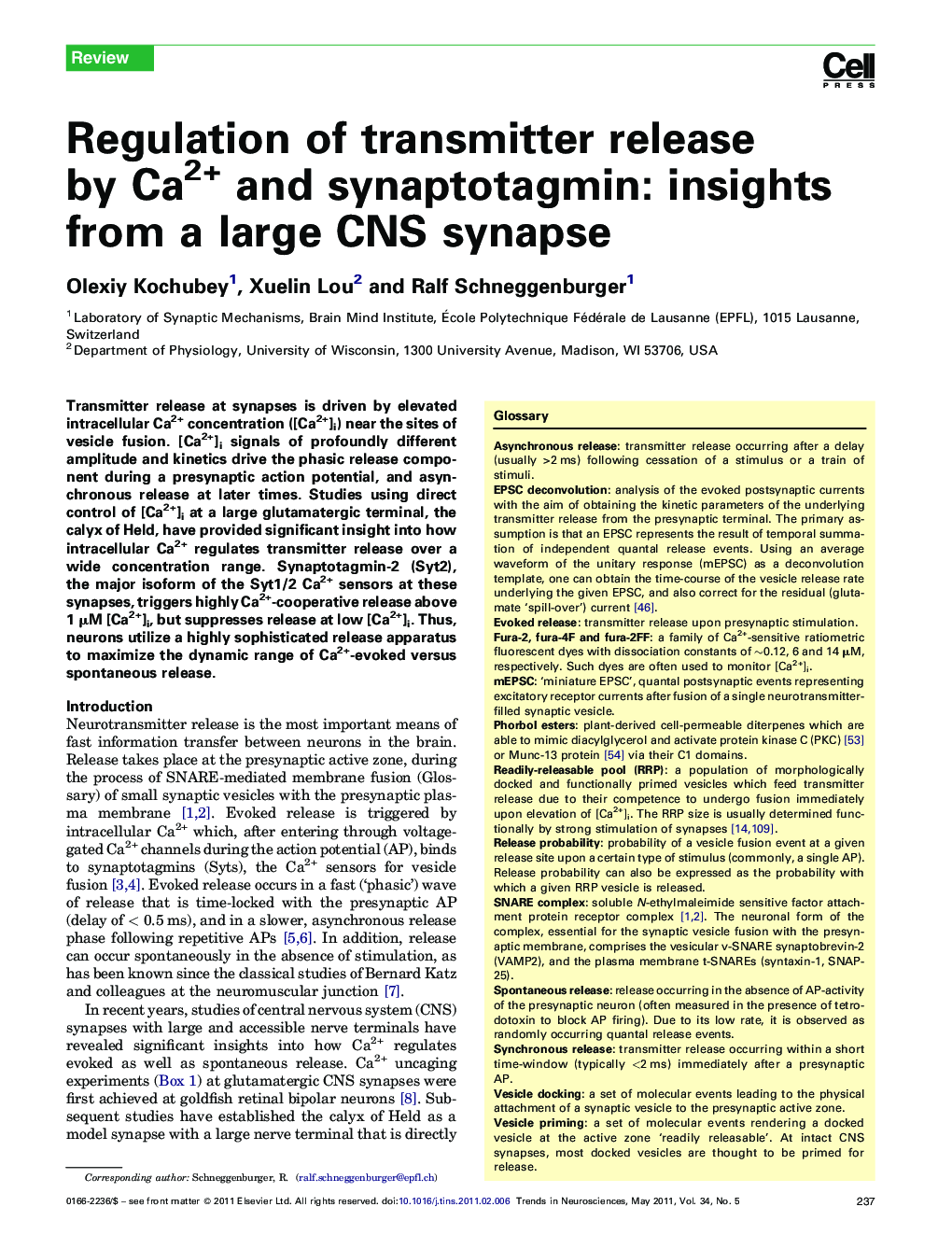| Article ID | Journal | Published Year | Pages | File Type |
|---|---|---|---|---|
| 4354459 | Trends in Neurosciences | 2011 | 10 Pages |
Transmitter release at synapses is driven by elevated intracellular Ca2+ concentration ([Ca2+]i) near the sites of vesicle fusion. [Ca2+]i signals of profoundly different amplitude and kinetics drive the phasic release component during a presynaptic action potential, and asynchronous release at later times. Studies using direct control of [Ca2+]i at a large glutamatergic terminal, the calyx of Held, have provided significant insight into how intracellular Ca2+ regulates transmitter release over a wide concentration range. Synaptotagmin-2 (Syt2), the major isoform of the Syt1/2 Ca2+ sensors at these synapses, triggers highly Ca2+-cooperative release above 1 μM [Ca2+]i, but suppresses release at low [Ca2+]i. Thus, neurons utilize a highly sophisticated release apparatus to maximize the dynamic range of Ca2+-evoked versus spontaneous release.
